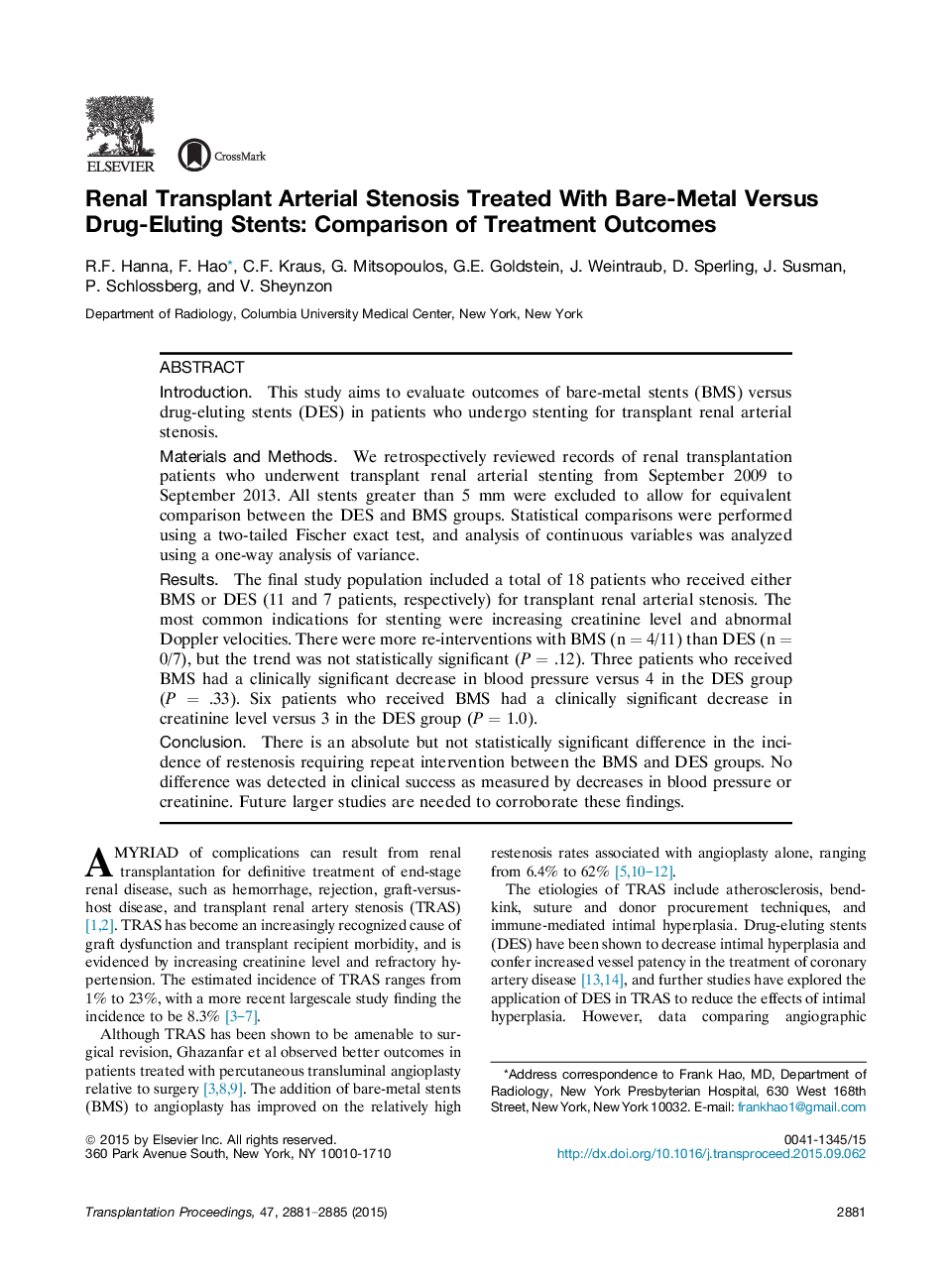| کد مقاله | کد نشریه | سال انتشار | مقاله انگلیسی | نسخه تمام متن |
|---|---|---|---|---|
| 4255838 | 1284500 | 2015 | 5 صفحه PDF | دانلود رایگان |
• Data at our institute suggests that there is no difference in reintervention between using bare metal versus drug eluting stents in transplant renal artery stenosis.
• It also suggests that there is no difference in improvement in blood pressure of creatinine.
• Drug eluting stents costs more than bare metal stents, and require patients to be placed on extended antiplatelet therapy. Our data suggests using drug eluting stents causes undue financial burden and patient risk.
IntroductionThis study aims to evaluate outcomes of bare-metal stents (BMS) versus drug-eluting stents (DES) in patients who undergo stenting for transplant renal arterial stenosis.Materials and MethodsWe retrospectively reviewed records of renal transplantation patients who underwent transplant renal arterial stenting from September 2009 to September 2013. All stents greater than 5 mm were excluded to allow for equivalent comparison between the DES and BMS groups. Statistical comparisons were performed using a two-tailed Fischer exact test, and analysis of continuous variables was analyzed using a one-way analysis of variance.ResultsThe final study population included a total of 18 patients who received either BMS or DES (11 and 7 patients, respectively) for transplant renal arterial stenosis. The most common indications for stenting were increasing creatinine level and abnormal Doppler velocities. There were more re-interventions with BMS (n = 4/11) than DES (n = 0/7), but the trend was not statistically significant (P = .12). Three patients who received BMS had a clinically significant decrease in blood pressure versus 4 in the DES group (P = .33). Six patients who received BMS had a clinically significant decrease in creatinine level versus 3 in the DES group (P = 1.0).ConclusionThere is an absolute but not statistically significant difference in the incidence of restenosis requiring repeat intervention between the BMS and DES groups. No difference was detected in clinical success as measured by decreases in blood pressure or creatinine. Future larger studies are needed to corroborate these findings.
Journal: Transplantation Proceedings - Volume 47, Issue 10, December 2015, Pages 2881–2885
